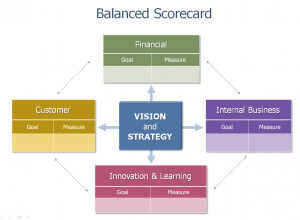[PF] How does one measure the success of a social business platform? This is something companies usually want to know right after implementing such a solution. But there are no easy answers, since soft, difficult-to-quantify factors play a major role in the social software context – which is the logical consequence of a system that fosters better communication and interaction among employees. This blog post will provide insights into how companies might overcome the challenges of measuring social “ROI”.
Let’s start with some basic ideas: Performance indicators provide useful insights into isolated aspects of a social business platform. But to be able to evaluate the totality of information, one has to view performance indicators from a number of perspectives and merge them with other data. On one hand, there are certain quantifiable metrics that give us feedback about how the system is being used. Some of these are very easy to calculate because today’s social business programs come with out-of-the-box capabilities for generating usage statistics. On the other, one quickly runs into the limits of what information can be collected on soft factors because, as mentioned above, such data is difficult or impossible to quantify. The two approaches to data collection – the purely objective and the purely subjective – have their distinctive pros and cons. It is necessary, however, to mix the two types of data and present the information in a unified way in order to gain a better understanding of the big picture and get actionable takeaways that will help your company reach the next level. Experience from previous social business projects has shown that the balanced scorecard is an effective tool for accomplishing these objectives.
The balanced scorecard in a nutshell
A balanced scorecard is a concept used to measure performance that moves beyond a simple set of performance indicators. It ties together the different viewpoints that go into determining the indicators in a strategic manner. Striking a balance between the varying perspectives, the approach provides a complete picture of performance on an easy-to-interpret scorecard. The original version of this balanced scorecard consists of four perspectives that can be adapted according to the specific business context:
- The customer perspective that assesses the satisfaction level of customers.
- The financial perspective that brings together financial data to evaluate fiscal performance.
- The internal business process perspective that appraises how well business processes are meeting objectives such as a certain level of efficiency or effectiveness.
- The learning and growth perspective that collects and analyzes data on both employee and organizational self-improvement.
How can companies use the balanced scorecard to measure success?
To get started with your own balanced scorecard, simply follow the steps below. This is a procedure that has proved effective at Pokeshot///SMZ time and again.
- Define performance objectives

- Develop performance indicators and determine the measurement method
- Identify the perspectives
- Assign the performance indicators to the different perspectives
- Describe both specific connections (between the indicators) and generic connections (between the perspectives)
- Set target values
- Make recommendations for action based on performance analysis
- Critically assess perspectives, performance indicators and connections and realign where necessary
It is evident that this approach places a high value on the connections between performance indicators (see point No. 5). This works to the strength of the balanced scorecard and enables actionable insights to be derived in areas like usability, duration and frequency of use, level of awareness and information source preferences.
To make everything as clear as possible, let’s take a look at a real-life example. A company collected data on a number of performance indicators to measure the success of its newly launched social intranet. The indicator “unique user” indicated that 9 out of 10 employees regularly visited the new tool. There is nothing negative about this figure at first glance. But managers at the company became suspicious when results came in later that said only 3 out of 10 employees were “satisfied with the new tool.” Because of our extensive experience in this area, we at Pokeshot///SMZ were able to assist the client with this issue. We recommended visualizing the performance indicators in a balanced scorecard, while also assigning the indicators to perspectives and describing any interconnections. Suddenly it was possible to draw more far-reaching conclusions. These new insights helped to explain the initial finding through a critical assessment of the “unique user” indicator. An answer was also found to the question, Why do 9 out of 10 employees use the social intranet if most of them are not satisfied with it? It turned out that there was no alternative to the intranet within the company; employees had to work with this tool. Without bringing together quantitative and qualitative data in an easy-to-understand format it would not have been possible to gain this insight.
Summary
To make measuring success a reality, it is important to remember a few points:
- Social business platforms foster better communication and interaction among employees.
- Soft factors play a major role in measuring performance.
- The collection of purely objective or purely subjective data will not achieve the desired objectives.
- The balanced scorecard is a tool that combines the strengths of both of these types of data collection.
- The specific performance indicators must be in line with the overall social business strategy.
We will explore the topic of performance measurement in greater detail in the future and hope to have interesting discussions with you on this important subject. You will also have an opportunity to learn more about performance measurement on March 10, 2014 in Hanover, Germany, where Pokeshot///SMZ will be taking part in the expert panel “Determining the value of social collaboration ROI” at the CeBit’s Social Business Arena. Come by and let’s continue the conversation after the panel. I look forward to seeing you!
[hr]
About the author
